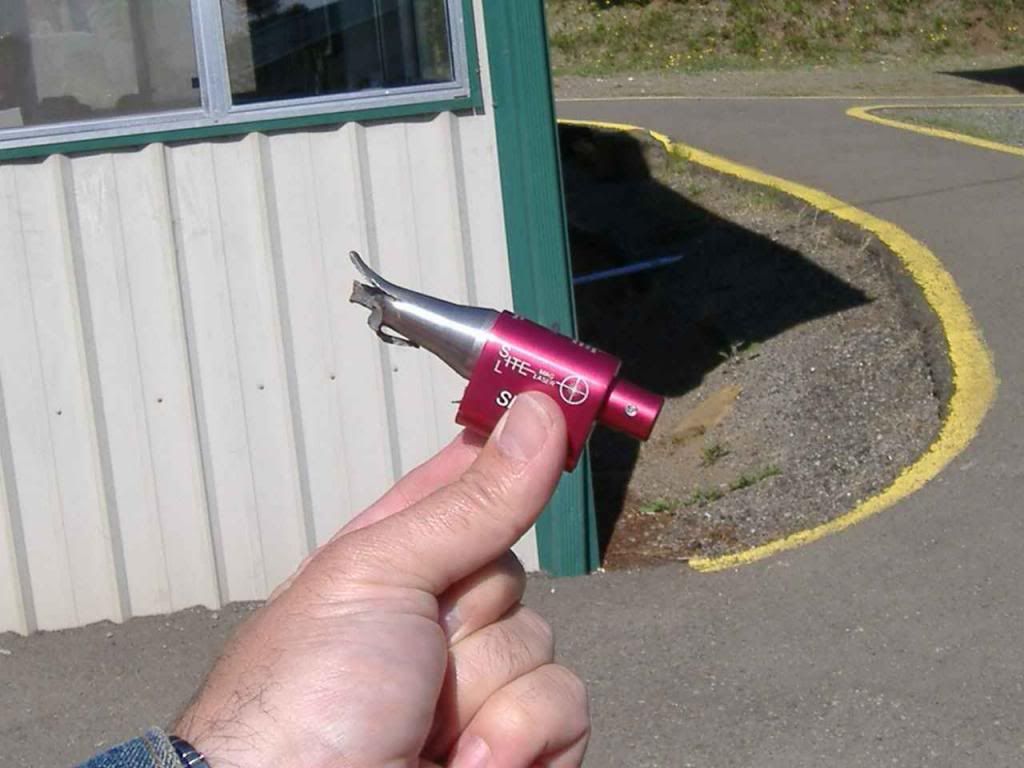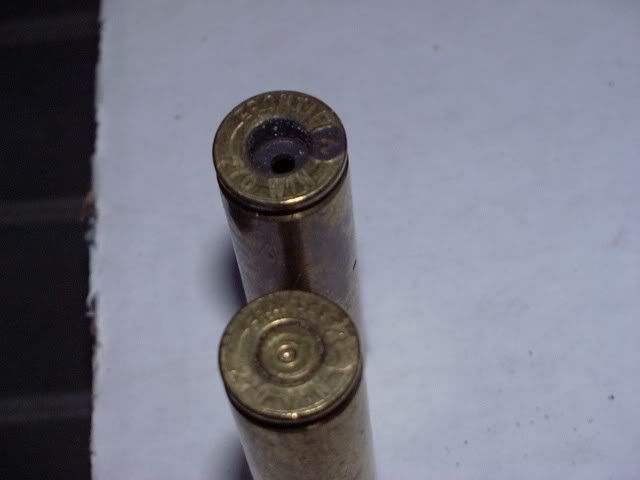Reply not directed at any particular poster.
I was trying to be content sitting here watching the show but I just can't take it anymore.
First and foremost, considering all the talk about double-charges, double-loading, double-balling and all the other loading errors, the discussion should be on educating the shooters about the necessity for safety and proper loading techniques. Thirty some years ago when I started shooting ML's, the first order of business was to clearly permanently mark the ramrod with a notch or brand line once the final load was established, if the mark doesn't align with the muzzle, something is wrong and the load is pulled because it's a matter of safety and there is absolutely no excuse for not putting safety first when any kind of gun is involved. For as many hissy fits are thrown over electrostatic discharge and black powder, one would think that as much care and concern would be applied to the actual safe loading and operation of the gun as well. I mean seriously, the anti's wouldn't have to do anything more than copy & paste from these forums and their case would be made without them having to speak a single word.
Second, this thing called the Internet is both good and bad because people with no or very limited understanding of metallurgy or metal working can type in an alphanumerical alloy designation and get a list of numbers with which to argue but they have no concept of what the numbers mean or how they are obtained. This utter nonsense is as much a waste of time as the gun rag writers blabbering on and on about velocity and energy when neither one is worth a drop of snot when evaluating terminal performance potential for any given projectile. Every time these topics come up, people go to throwing numbers around and they mean absolutely nothing because they do not factor in shock-loading nor cyclic fatigue which are the two most common causes of material failures which may or may not be related to work-hardening.
This also includes the arbitrary use of alloy designations which lack identifying the exacting specifics of the particular version of said alloy. Such as the case where some will spout off about how great/poor xxxx alloy is/is not while lacking the understanding that said alloy likely comes in many different forms which may include being “fully annealed”, “tempered” to some level or “case-hardened”. The alloy designation based on its composition remains the same but the difference in how the alloy is processed, tempered or hardened can produce profoundly different performance results in a given application.
Third is proper terminology. While there's little significance in arguing the term “lamp” as opposed to “light bulb”, there is prudent significance in addressing the dangers created when matter-of-fact statements are made by people who have no comprehension what terminology is applicable nor the correct definition thereof.
DOM means Drawn Over Mandrel, any tube be it round, square, rectangular or any other shape that is formed or finished by drawing it over a mandrel is “DOM tubing” no matter if it has a seam or not. If one chooses to make a distinction between the “formed” and “pierced” methods of manufacturing DOM tube, then such distinction should be properly applied.
“Welded” means nothing more than “joining” unless there's some other descriptive terminology included so as to specify the actual joining method. Welded seam tube is manufactured using resistance welding, electron beam welding, plasma arc welding, gas metal arc welding, submerged arc welding along with several other “welding” (joining) methods. Each specific welding process has its own unique characteristics that affect both the static and dynamic properties of the finished product. Unless all the pertinent data concerning both the material and its method of manufacture are known, the material is considered to be “unknown”. Using nothing more than the unspecified term “welded” for the purpose of either condemning or supporting any material or product serves only to place ones ignorance on display.
Fourth, common sense and the real world. Nothing displays asinine stupidity more than the claim “A gun barrel made from modern gun barrel steel cannot fail with a black powder load.” Even if one lacks all understanding of technical details, just the slightest hint of common sense is enough to suggest that confining a propellant inside a gun barrel in a manner that is inconsistent with proper safe operation has the potential to result in catastrophic failure of said barrel no matter what it's made from or how it's made. Related is the hideous statements made about alleged “proof testing” with gross overcharges and/or improper loading techniques. Proofing is done to ensure a given level of assurance that the assembly is safe for use with “standard service loads” not accidents, incompetence or plain old stupidity ”“ if such were applied to other items in our daily life we wouldn't have much of anything to work with because if one tries hard enough they can choke on a basketball. Simply dumping multiple charges and projectiles into a bore only proves “it didn't fail this time” but what happens when that same barrel fails with a “normal service load” at some point down the road because it was damage during the alleged “proof test” that was conducted lacking any regard for reasonable standards? Just because it didn't blow-up or deform this time does not mean that the proportional limit of the particular assembly has not been breeched thus rendering it unsuitable for service.
Here's an example: The guy who owned the rifle in which these cases were fired admitted to intentionally overcharging the rounds in an attempt to gain more velocity. His reasoning for doing this was because he read on the Internet about how well the particular rifle held-up to high-pressure proof loads so he exercised complete stupidity making the determination that it was safe to run the gun at or above the proof pressure.
For those who may not know, this picture shows the excessive operating pressure of the load required to cause deformation of the case head by extruding it into the bolt face. Unfortunately the rifle did hold-up to just one too many of these excessive pressure loadings because it was sold to an unsuspecting buyer who suffered serious injuries when it finally did blow-up with a normal service load.
No manufacturer or supplier of metal, be it DOM tubing, structural shapes, solid bar or whatever is going to make any statements concerning the suitability of a product for an application because to do so would result in business suicide via litigation ”“ engineers, not manufacturers or suppliers make the determination of what materials are suitable for a given application. Don't believe me, go look at the disclaimers most metal suppliers have on their website and/or sales agreement (receipt) statements like: Although certain items/materials are identified by common names such as “ship & car channel” or “boiler tube” the seller makes no claim or warranty as to the suitability of said materials for any uses.





